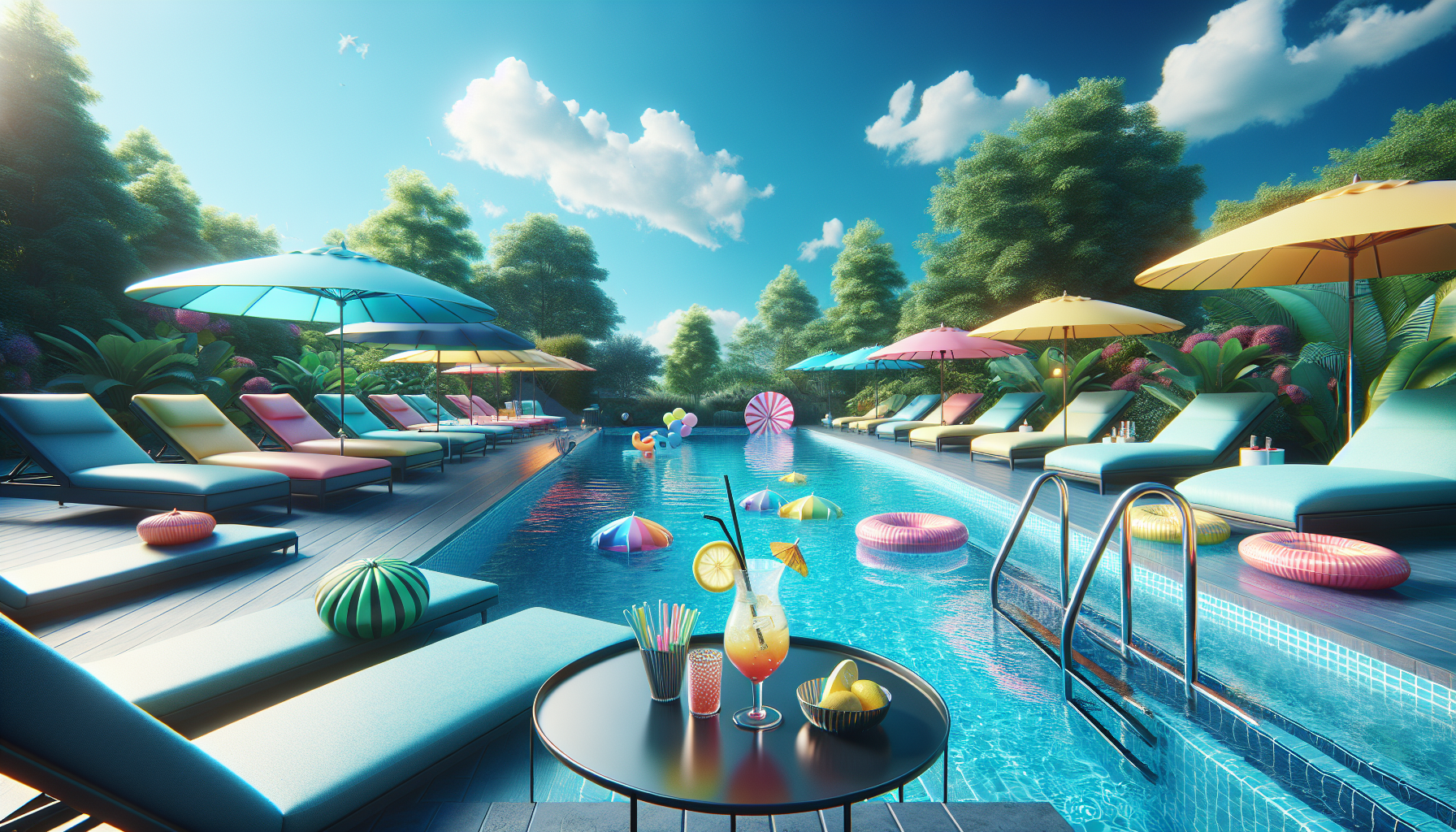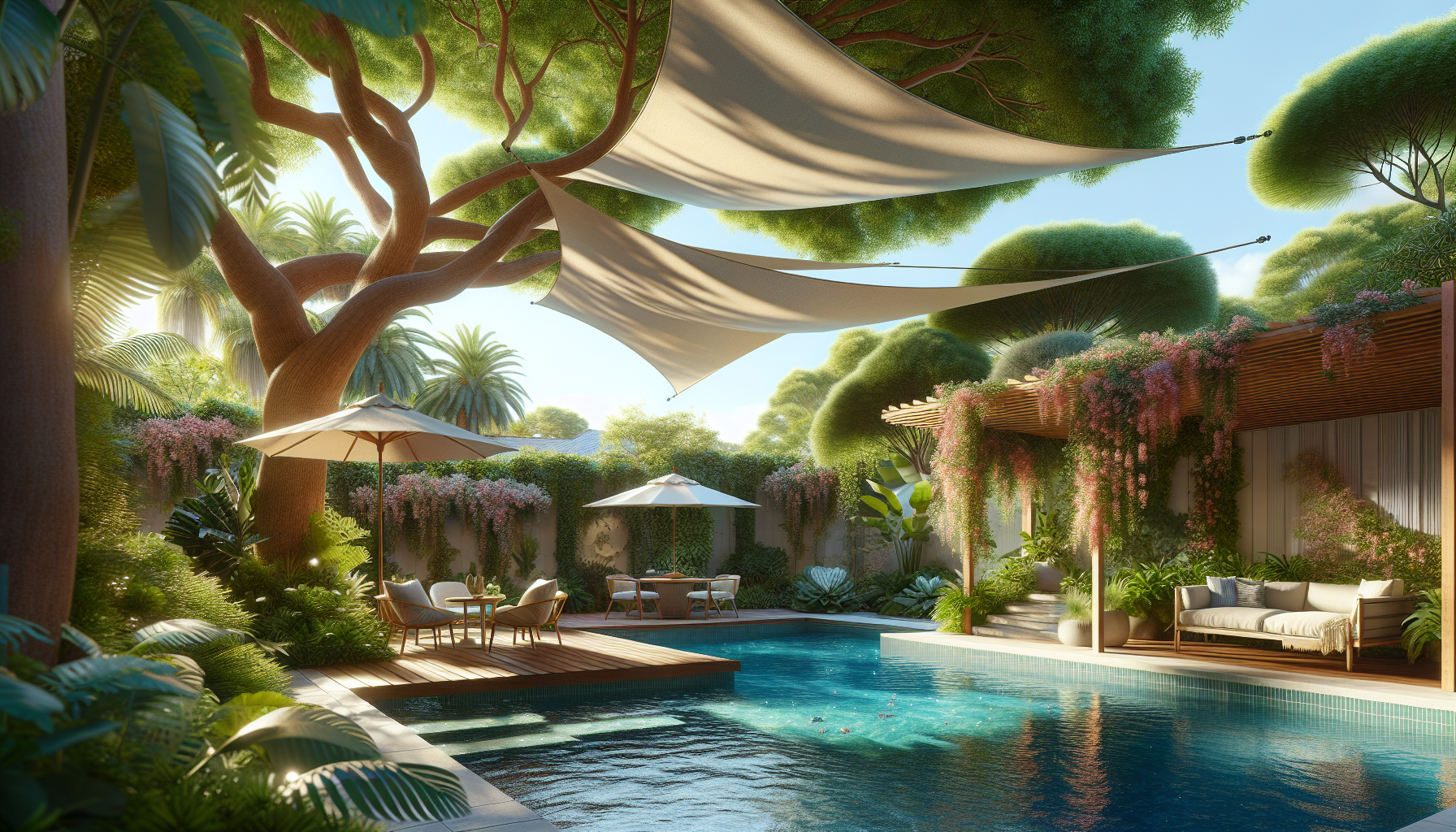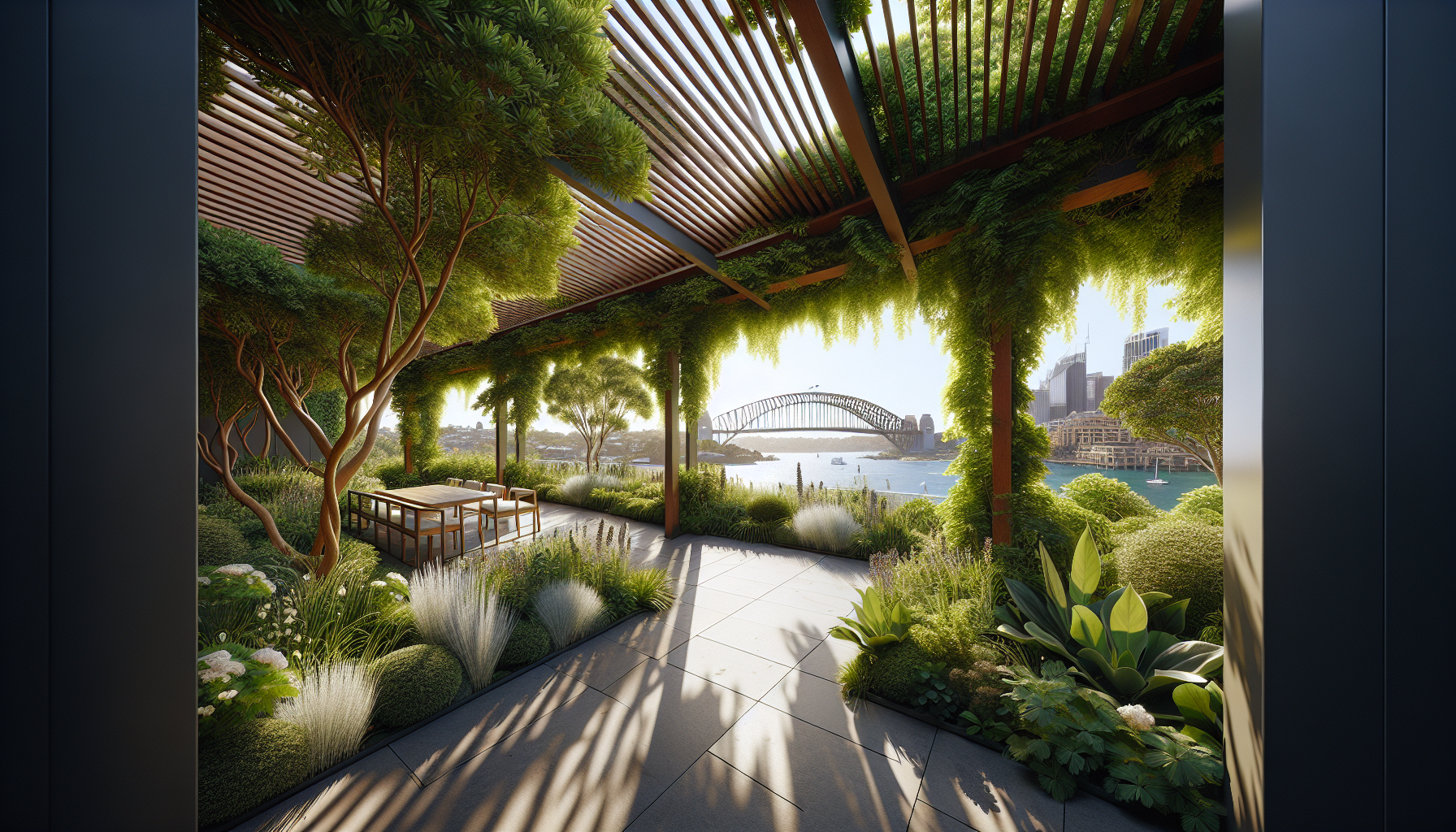What is a Pool Pergola, and Why Do You Need One?
When enhancing your outdoor space, a pool pergola is a stylish and practical addition that can transform your pool area into a private oasis. A pool pergola is an outdoor structure consisting of columns supporting a roofing grid of beams and rafters. This grid may be left open or covered to create an area of partial shade over your pool. With its unique blend of functionality and aesthetics, a pool pergola can be a focal point in your garden or backyard.
Aside from the obvious visual appeal, a pool pergola offers a variety of functional benefits. Perhaps the most significant advantage is sun protection. Spending time by the pool is a favorite activity for many, but the harsh sun can often make it an uncomfortable experience by providing a shaded area, a pool pergola allows for extended enjoyment of the pool without the direct impact of the sun’s rays. It also helps protect your skin from overexposure to UV radiation, a health hazard during long hours spent outdoors.
The Versatility of Pool Pergolas
Pool pergolas are incredibly versatile and can be customized to fit any pool size or style. Whether you have a large, resort-like pool or a small, intimate one, there is a pergola design to suit your needs. You can choose from a wide range of materials, such as wood, metal, or vinyl, and incorporate various styles of roofing, including fabric canopies or retractable covers. This customization allows your pool pergola to serve as a functional element and a reflection of your aesthetic.
An often overlooked benefit of a pool pergola is that it can add value to your property. An attractive outdoor feature such as a well-designed pergola can be a strong selling point if you ever decide to sell your home. It signifies that the homeowner values leisure and has invested in creating a luxurious and comfortable outdoor environment. This added value and the enjoyment you’ll receive make a pool pergola a worthwhile investment for any homeowner.
Designing the Perfect Pool Pergola for Your Backyard
When contemplating the addition of a pool pergola to your backyard, there are essential design elements to consider to ensure the structure complements your swimming area and enhances your entire outdoor experience. A pool pergola serves not just as a striking visual centerpiece but also as a functional space where shade and openness come together. As you design your perfect poolside retreat, consider the pergola’s size, materials, and the level of shade it will provide.
Size is a critical factor when designing a pool pergola. It should be proportionate to the pool and yard size, ensuring that it doesn’t overwhelm the space or seem inconsequential. A balance between the pergola’s footprint and the free area around the pool is vital for both aesthetics and practicality. Visualize how furniture like loungers or a dining set will fit under your pergola; this will help determine the ideal dimensions. Additionally, consider the pergola’s height, especially if you plan to include elements such as fans or hanging plants.
Choosing materials for your pergola can greatly affect its look, longevity, and maintenance levels. While traditional wood pergolas offer a classic, natural aesthetic, they require regular upkeep to prevent weathering. Alternatively, vinyl and aluminum options provide a modern appearance and are resilient against the elements with minimal maintenance. For a truly custom look, consider stone columns that echo the design elements of your pool and home’s exterior. No matter which material you choose, ensure it can withstand the humidity and chemical exposure that comes with proximity to a pool.
Shade production is another significant aspect of pool pergola design. The slats or beams that run along the top can be spaced according to your preference for sunlight penetration. For those hotter climates, tighter spacing or even a full cover can provide a cool refuge from the sun’s intensity. For a more flexible solution, retractable canopies or drapery can be incorporated to provide shade on demand, allowing for an adaptable outdoor living space that caters to the varying needs of the day or season.
Top Materials for Building a Durable and Stylish Pool Pergola
Wood – A Timeless Classic
Wood stands out for natural beauty and versatility when considering materials for a pool pergola. Among the most popular woods for pergolas, cedar, and redwood are renowned for their durability and resistance to moisture, decay, and insect damage, making them particularly suited for poolside conditions. They also have a natural warmth and grain that can blend seamlessly with outdoor environments, enhancing the aesthetic appeal of your poolside retreat. However, It is important to opt for treated variants or regularly maintain the wood with sealants to prolong its life and keep its stunning appearance intact.
Aluminum – Modern and Low Maintenance
For those seeking a more modern flair and minimal upkeep, aluminum pergolas are an excellent choice. This material is lightweight, strong, and, unlike some metals, does not rust, making it ideal for the humid environment of a pool area. Aluminum pergolas often come in various colors and finishes, allowing for customization to match any design theme. Furthermore, these structures are frequently available with additional features such as adjustable louvers for controlling sunlight and shade—a boon for poolside comfort.
Vinyl – Sleek and Robust
Vinyl pergolas are another fantastic option for those who prioritize longevity and ease of maintenance in their pool pergola materials. Vinyl does not crack, peel, or warp, ensuring the structure remains pristine for years. Moreover, this material is resistant to moisture, making it particularly suitable for swimming pool areas that are continuously exposed to water. The sleek appearance of vinyl pergolas provides a contemporary edge to your poolside. Since the color is integrated throughout the material, there is no need for repainting—simply clean with a hose to maintain its fresh look.
The selection of materials for your pool pergola should reflect the desired style and consider the unique environment of a poolside setting. Durability, resistance to water and humidity, and ease of maintenance are key factors to consider. Whether you choose the traditional charm of wood, the contemporary elegance of aluminum, or the practicality of vinyl, ensuring that you invest in high-quality materials will enhance the enjoyment and longevity of your outdoor space.
Incorporating Shade Solutions and Privacy Features into Your Pool Pergola
Designing the perfect poolside retreat involves aesthetic appeal, functional shade solutions, and privacy features. When integrating such elements into your pool pergola, the goal is to strike a balance between sun protection and a sense of seclusion without compromising on the welcoming openness of the outdoor space. For homeowners who relish their time in the sun but understand the importance of sun safety, there are many shading options to consider.
Louvered roofs are an innovative and adjustable solution for your pool pergola. These roofing systems allow you to control the amount of sunlight filtering through with movable slats. Depending on the time of day or your preference, you can angle the louvers for full sun, partial shade, or complete closure. Not only do they provide flexible shading options, but they also contribute to the privacy factor, as they can be adjusted to block views from above. Moreover, they can be equipped with rain sensors to automatically close in inclement weather, thus protecting your poolside furnishing.
In addition to louvered roofs, the classic sunshade fabrics offer a practical and cost-effective solution. These high-quality textiles can be draped or stretched over your pool pergola, providing UV protection and creating a soft, diffused light that enhances the ambiance. The fabric can be selected to complement the pergola’s style, ranging from bright and bold colors to neutral tones, while also providing a barrier to prying eyes from neighboring properties.
For a more organic approach, incorporating climbing plants and vines along the sides and atop your pergola can provide a lush, green canopy of shade. Plants such as wisteria, ivy, or grapevines not only bring a natural shade cover but also enhance privacy and add an element of tranquility to the pool area. As the plants intertwine and grow over the structure, they create a living wall that acts as a buffer from the outside world, enveloping you in a serene, secluded paradise.
Pool Pergola Maintenance: Protecting Your Investment
Regular maintenance is crucial for your pool pergola to ensure it remains a functional and beautiful extension of your living space. Exposed to the elements, pergolas require periodic attention to protect the material integrity and aesthetic value they add to your poolside experience. Proper care will extend the life of your investment and keep it looking as inviting and picturesque as the day it was installed.
Cleaning and Sealing Your Pergola
The foundation of pool pergola maintenance is keeping it clean. Over time, dirt, grime, and algae can accumulate, particularly in a poolside environment where moisture is ever-present. A gentle wash with a mild detergent and water can do wonders to rejuvenate its appearance. For wooden pergolas, it is also essential to regularly seal the wood after cleaning. A high-quality sealant can protect the wood from water damage, ultraviolet rays, and chlorinated pool water, which can otherwise lead to warping and discoloration.
Inspecting for Damage
At least twice a year, perform a thorough inspection of your pergola. Look for signs of wear and tear, such as cracks, splinters, or loose hardware. These issues, if left unattended, can escalate and compromise the structure’s safety and stability. Early detection and prompt repair work can save you from costly overhauls. Pay special attention to areas where water might collect or where the structure is in close contact with vegetation, as these are common spots for rot and rust in wooden and metal pergolas, respectively.
Trimming Vegetation and Managing Pests
If your pool pergola is adorned with climbing plants or is in close proximity to overhanging trees, regular trimming is necessary to prevent organic overgrowth that can cause structural damage. Overgrown plants can lead to excess moisture retention and attract pests that could harm the pergola’s materials. Managing pests is also crucial; bees, termites, and wasps can be detrimental to wood, while certain insects may also affect metal pergolas by nesting in joints or crevices. Regular pest inspections and prompt treatment of infestations will protect the integrity and longevity of your poolside structure.
Remember, your pool pergola is not merely an accessory but an integral part of your outdoor leisure area. Adequate and ongoing maintenance safeguards your investment, ensuring that this centerpiece of your backyard oasis serves you well for seasons to come.




